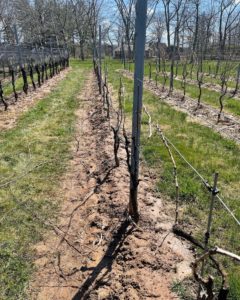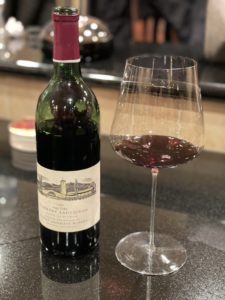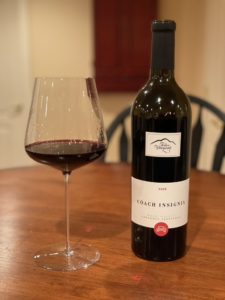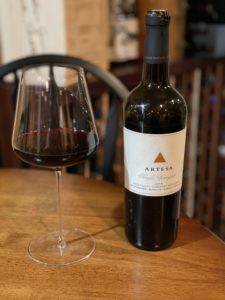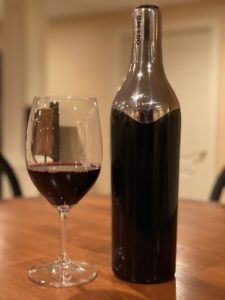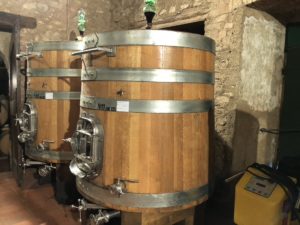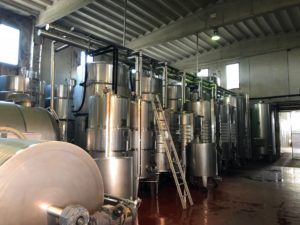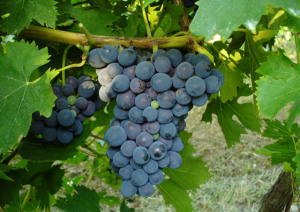Do you recall the “I Love Lucy” episode where Lucille Ball is working at a candy factory on the packaging line, when the line starts to speed up and she is forced to eat some of the chocolates while she’s trying to package them up? If not – Google it and you will get a good sense for what it’s like working on the bottling line at a commercial winery! I had just such an experience today at Karamoor Estate Winery, where the winemaker, Kevin Robinson, and his team were bottling their 2021 Rose, which is a blend of Cabernet Sauvignon, Cabernet Franc, Pinot Noir and Petit Verdot. In my continuing education around vineyard and winery operations, Kevin invited me to join the crew and help with bottling their Rose today. Really cool experience seeing the operation up close! Everything I did in Wine School during my Advanced Winemaking certification program was amplified 10-fold due to the fact Karamoor is is a legitimate commercial winery!
I first took notice of the massive pump they were using to pull the wine from the aging tank, through 2 sterile micro-filters and into the bottles. And, for what it’s worth, the 2021 Rose vintage wasn’t equally massive – only around 140 cases, but you need heavy duty horsepower to get the wine to move from a tank located on the other side of the winery to the bottling area, and force it through 2 micro-filters. Kevin spent about 10 mins showing me the equipment and describing what each area of the bottling line does, as well as the filters. In a nutshell, Karamoor uses state of the art technology (the bottling machine alone costs over $150k) to vinify, age and bottle wine. Pretty amazing considering they are a relatively small estate grown and bottled operation, covering roughly 25 acres under vine. Each section of the bottling line serves a distinct purpose, including (from the start of the line) injecting nitrogen into each bottle prior to filling the bottle with the wine under vacuum (any inert gas heavier than oxygen will do here in order to protect the wine from oxidation), inserting the cork, installing the foil capsule (that pliable metal covering that goes over the cork and bottle top) and applying the front and back label. All of this happens at an incredible pace when the machine is operating at full speed. Needless to say, it required 2 of us, just to keep up, to box up the wine and stack it onto palettes. On the front end of the line, a winery worker loaded the empty bottles onto a conveyer system to start their short journey into a beautiful bottle of Rose at the end of the line.
As we bottled and boxed up around 70 cases of Rose, Kevin was mulling over the idea of shutting down for the day and resuming next week. However, that would require all of the equipment to be cleaned and sanitized again vs. just breaking down the clogged filter, cleaning it (with a combination of steam and sanitizing solution), setting it back up and resuming bottling. In a winery, the single most important aspect of winemaking is cleanliness and sanitation. Any microbe living in the winery (there are billions upon billions of them) can spoil a harvest if you are not extra careful keeping every surface cleaned that can possibly touch the wine. Kevin decided it was easier and faster to clean out the filter and finish up the bottling on the same day. Once cleaned and set-up again, we commenced to finish off the remaining bottles. This is the next to last step in the process of making a high quality wine, with the remaining step being the consumer enjoying the fruits of the winery’s labor! Cheers!
